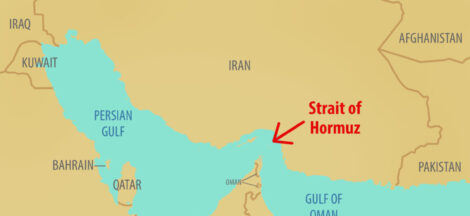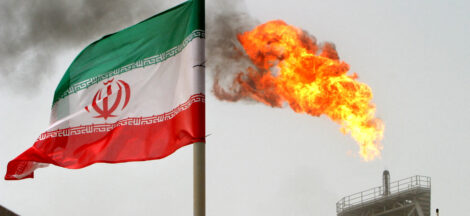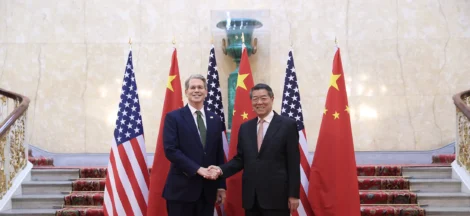Whatever the impending regime change in Afghanistan may mean to India, the country should accept the reality soon and join China, Russia, Pakistan and the UK, among others, to support the political change in Afghanistan. The India-Afghanistan relations are over 1,000 years old. Sultan Mahmud of Ghazni invaded India 17 times between 1000 and 1027 AD. Nearly all former Islamic rulers of India originated from Afghanistan. India will make a big mistake if it trusts the USA on its immediate Afghanistan policy. A regime change in Afghanistan is no guarantee for peace. Name an Islamic rebel group which is not present in Afghanistan. The state has lived with several terrorist groups, including ISIS (Khorasan) that claimed responsibility for the latest deadly attack outside Kabul airport. The attack came as the US forces were in the process of withdrawing from the country following the Taliban’s takeover.
Despite the fact that India has been a major economic partner of Afghanistan for decades with considerable strategic interest in the country as a key geographical link with central Asian republics, the US kept India out from most political negotiations over Afghanistan, owing mainly to Pakistan’s objections. During the Troika Plus talks among China, Pakistan, Russia, and the United States, India remained noticeably absent. With the Taliban taking control of Kabul, India needs to establish working relationship with the group fast to protect its critical investments in Afghanistan and try to keep the only alternate route (skipping Pakistan) open to connect with central Asia through Iran. Any delay in India’s support to a new Afghan regime could prove to be costly as a Pakistan-China-Taliban combine could take the opportunity to help foster safe havens for anti-Indian terrorist outfits that could sow chaos in Kashmir and other parts of the country. It may be worth considering the Taliban’s public assurance of its readiness to work with India.
Moreover, there is no reason for India to become hesitant to accept the Taliban or any other group bringing about the regime change in Afghanistan when it has adjusted with the military regime in Myanmar, which seized control of the state in a coup overthrowing the democratically elected government of Aung San Suu Kyi and detaining her along with leaders of her National League for Democracy party, earlier this year. The Myanmar military had killed and injured thousands of Rohingya muslims before throwing them out of the country, mainly to Bangladesh and India
As of May 11, at least 783 Myanmarese protesters, mostly students, had been killed and a total of 3,859 people were under detention, with 20 of them facing death sentences. Despite the UN condemnation of the military takeover and the US, UK and EU imposing sanctions on the junta, regional powers such as India, China and Russia have taken a more measured approach to the unfolding situation. Though the latter condemned the violence, none have explicitly criticised the Tatmadaw (the armed forces in Myanmar). For India, Myanmar is the gateway to Southeast Asia. It is a neighbour with which India shares both a land and sea border. Myanmar has been an important ally in combating extremism and insurgency in the region. If the military regime in Myanmar is acceptable to India, a Taliban rule in Afghanistan should also be acceptable to it for different reasons.
Trust is the key. The new Taliban, led by apparently more moderate and educated leaders such as Mullah Abdul Ghani Baradar, appears to be different from the old, non-compromising Taliban. They may like to keep India on their side to negotiate better with undependable Pakistan, which once sided with the US to overthrow the previous Taliban regime, and politically shrewd China. On July 28, China’s Foreign Minister Wang Yi met a Taliban delegation, led by Mullah Abdul Ghani Baradar, in Beijing and was believed to have had a detailed discussion on the group’s role in Afghanistan. The Taliban’s top leaders are reportedly working on the policy on how they would govern Afghanistan. Baradar, one of the Taliban’s popular public faces, also negotiated the exit of US troops with the former US president Donald Trump during their peace talks in Doha, last year.
In fact, all eyes are now set to be on him to get a feel of how the Taliban intend to rule Afghanistan this time round, and how different they would resemble to the oppressive Taliban regime of the past. India had a horrific experience in dealing with the previous Taliban regime, which gave free rein to a host of anti-Indian terrorist organisations within Afghanistan, led by Jaish-e-Mohammed (JeM) and Lashkar-e-Taiba. Safe havens were allowed to these organisations to regroup, train, and then wreak havoc in Indian Kashmir, the site of a long-running insurgency. However, India may have a little choice but to trust this new Taliban and offer to stand by its side as early as possible.
On the present Taliban’s part, India, which is currently involved in as many as 150 community development projects in Afghanistan, should be seen as the most trusted economic partner. Unlike China, India has shown practically no interest in exploiting Afghanistan’s rich mineral resources for its gains. Afghanistan is rich in resources like rare earths, lithium, copper, gold, oil and natural gas, uranium, bauxite, coal, iron ore, chromium, lead, zinc, sulphur, gypsum and marble. With the US gone, China is looking for a big share of some of the minerals such as rare earths, lithium, copper and oil. China is immediately interested in Afghanistan’s copper, oil and lithium deposits.
After the 2001Taliban collapse, China was involved in developing a copper mine, boasting the world’s second largest deposit, under a 30-year lease worth $3.5 billion. The deal, signed in 2008, is very much on though its progress has been very slow. The mine’s copper deposit is valued at $50 billion. The China National Petroleum Corporation signed a $400-million deal with Afghanistan in 2011 to develop and drill three oilfields in Faryab and Sar-i-Pu for 25 years. A Brookings Institute report had noted that “Chinese government officials and experts on Afghanistan have confessed that China sought those bids simply to pre-empt other countries from gaining the concessions, while expecting fully well it would not start developing the concessions for years to come due to insecurity and the corruption of the Afghan government.” But, China may do it now if its currently favourite Taliban comes to power.
In contrast, India is now involved in high impact community development projects, Phase IV, worth $80 million. It has signed an agreement to build Shahtoot dam to provide safe drinking water to around two million residents of the Kabul city. India built a 202-kilometre-long Pul-e-Khumri transmission line through which India provides power to Afghanistan’s biggest city. Lately, India sent 20 tonnes of medicines and other equipment and transported 75,000 tonnes of wheat to Afghanistan to address its Coronavirus challenge. There is a definite shift in the Indian perspective of Afghanistan since the US decided to pull out of the country. India’s decision to invest in Afghanistan’s future where the Taliban is set to play a dominant role is seen as a major departure from the past. A year ago, India also participated in the commencement ceremony of the intra-Afghan talks in Doha where a 21-member Taliban team was present. If anything, it reflects India’s realisation of ground realities and fast shifting sands in Afghanistan’s power structure. (IPA Service)

 By
By 


